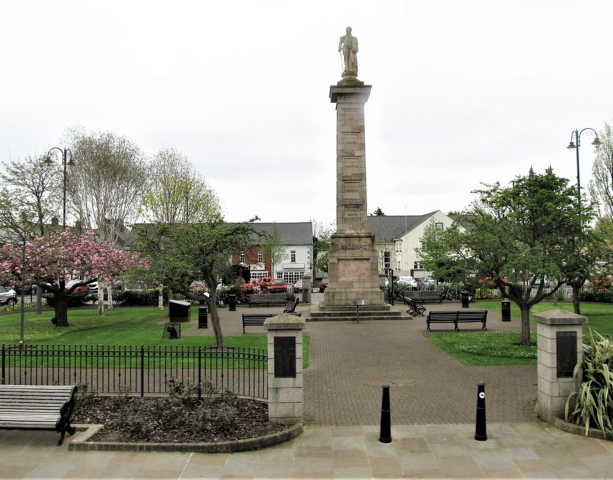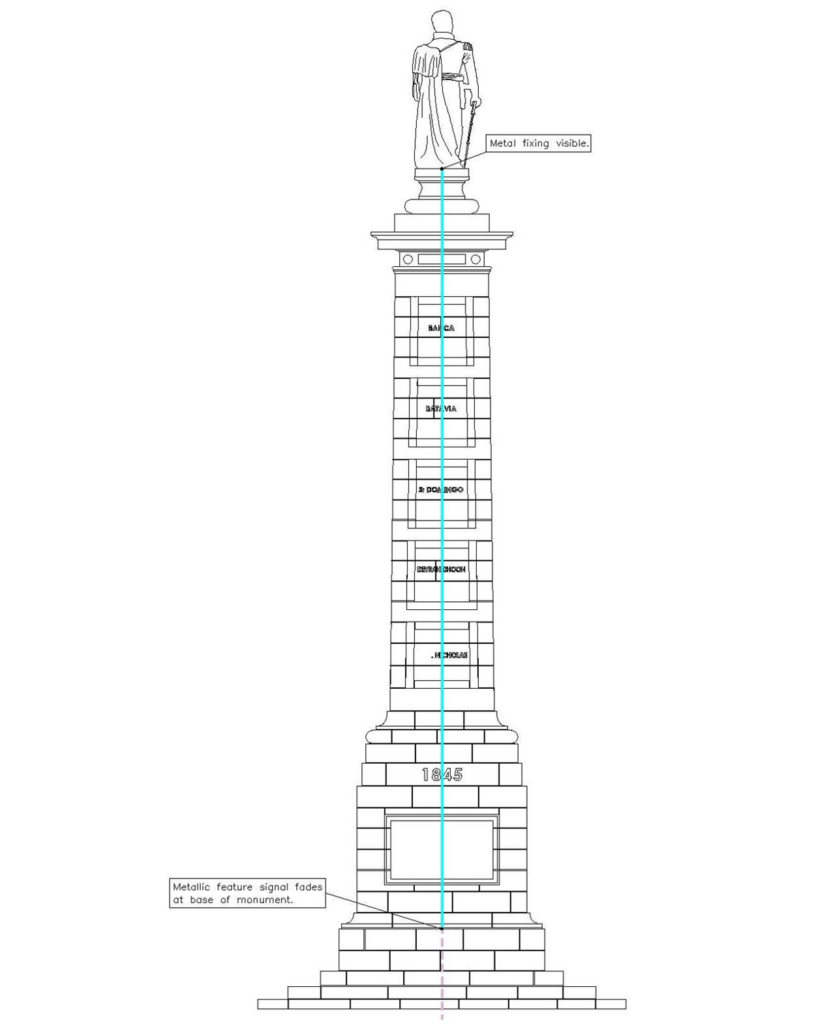GEOTEC GPR Survey Case Study
Background
“Whilst leading an attack on a fort, high in the Himalayas, Gillespie went on despite having no ammunition shouting “one more shot for the honour of Down”.
Born in Comber in 1766, Gillespie was killed at Kalunga in 1814 leading the main assault during the Battle of Nalapani during the Anglo Nepal War.
A hero in the town, Gillespie’s statue was unveiled on 24 June 1845 and comprises a free-standing sandstone square shaft column on a square stepped podium.

Statue of Major General Robert Rolo Gillespie in Comber, Co.Down
In need of renovation, Ards and North Down Borough Council agreed to initial investigation and the first stage of renovation works, estimated to cost around £15k, in February 2024.
As a result, Alastair Coey Architects contacted GEOTEC Surveys Ltd to complete a Ground Penetrating Radar & Electromagnetic Survey to locate metallic structural supports within the statue and any potential voiding within the associated stonework.
OPERATIONS
Survey works took place over Tuesday 16th and Wednesday 17th April 2024 and extensive scaffolding had been erected around the monument, in order to provide the survey team with safe access.

Statue with Scaffold
The survey was conducted using a GSSI StructureScan Mini XT Ground Penetrating Radar (GPR), due to its portable & self-contained nature, which employs a 2.7GHz antenna to provide high near surface resolution.
The StructureScan Mini XT is specifically designed to detect reinforcing bars in stone and concrete and has a maximum depth penetration of 60cm. The system gained good quality data through the sandstone to this depth.
The below photo shows the StructureScan Mini XT and radar file markings on the statue, in chalk.

We also utilised a radio-frequency location tool, designed to detect metallic and conductive targets.
Using the Radio Frequency Detector, we induced an electromagnetic signal into the exposed metal fixing at the feet of the statue (at the top) & and on the lowest step of the base which allowed us to trace the signal through the whole column.
The radio frequency detection survey found that metallic rod connecting the statue and the base may not currently be connected in its entirety. The two induction points may have been securely connected at some point, with the metalwork deteriorating over time.
The electromagnetic signal induced into the metal fixings was detected down the length of the column into the base, and possibly connects into a horizontal feature below ground level.
Areas of potential voiding were detected; each area was well defined by a single stone at the monument surface.
The most likely explanation for this would be that some of the stones are slightly shallower in depth and that a gap, or area of less dense material exists behind, in order to keep the façade even.
There was no obvious evidence of a structural void in the data collected.
The below drawing extracts detail the findings. The blue lines indicate where metal structural support may be present & the areas of hatching illustrate areas of potential voiding.

Elevation 1: North-West elevation

ELEVATION 2: NORTH-EAST ELEVATION

Elevation 3: South-East elevation

Elevation 4: South-West elevation
The results of the survey will the client to specify and inform the next stage of the renovation project of this important monument.
References
https://discovernorthernireland.com/things-to-do/rollo-gillespie-monument-p676381

 +44 (0)1428 686 168
+44 (0)1428 686 168 enq@geotecsurveys.com
enq@geotecsurveys.com






